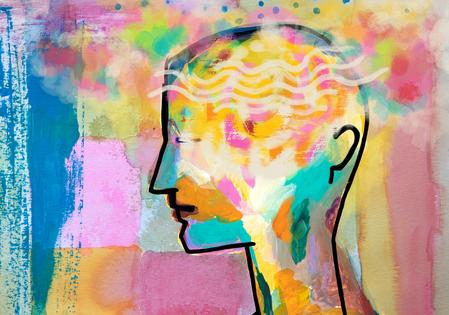Drawing, making music and writing poetry can support healing and bring more humanity to health care in US hospitals
Published in Health & Fitness
The COVID-19 pandemic shined a light on the deep need that people feel for human touch and connection in hospital settings. Having relatives peering through windows at their loved ones or unable to enter hospitals altogether exacerbated the lack of human intimacy that is all too common in health care settings.
Opportunities for creative expression through arts in medicine programs are increasing in U.S. hospitals, and it may be because art-making offers something that medicine can’t. Evidence shows that taking part in art programs has many therapeutic benefits, such as reducing anxiety and stress, supporting mental health and well-being and connecting people to one another.
Research has also shown that these programs can bring relief from the stresses and burnout that health care workers regularly experience.
As a medical anthropologist studying how to support people who are facing serious illness, as well as those who care for them, one of my research interests is the intersection of arts and medicine.
Participating in creative activities helps with expressing emotions. This can improve optimism, boost the body’s immune response and improve healing times.
Arts in medicine programs are also correlated with improved blood pressure and less pain and depression for some patients. Some music activities can help stroke victims recover balance and rhythm.
These types of clinical benefits are certainly valued. But what people I spoke with shared that was the most transformative for them were the ways art-making allowed them to feel more fully human.
One example is at the MD Anderson Cancer Centers in Houston. Ian Cion founded the hospital’s arts in medicine program in 2010. In 2014, he worked closely with more than 1,300 MD Anderson patients, their family members and staff to create a life-size paper dragon sculpture – one scale at a time.
Cion built the dragon’s frame in his home out of popsicle sticks, wire and cardboard and then placed the 9-foot frame inside a high-traffic area in the hospital. Young cancer patients, their families and the entire hospital community were invited to create scales, which they filled with their hopes, prayers and favorite images. A row of scales could be finished and placed on the dragon in 45 minutes or less, but it still took months for the project to be completed.
Cion’s goal with such collaborative projects was to pull people out of the isolation of illness and into community, and to celebrate and embrace the unknown.
For my 2022 book, “Creating Care,” I conducted a multi-site ethnographic study of creative expressive activities in U.S. hospitals. I interviewed more than 70 people, including those who facilitate, participate in and support art-making in hospitals. Some were licensed mental health professionals who were professionally prepared for such work, such as art therapists, music therapists and poetry therapists. Others were artists who simply chose to work in hospitals.
I wanted to understand why art-making is happening more frequently in hospitals, what benefits it provides and how these programs function alongside traditional medical care.
Medical care in the U.S. can be dehumanizing for both the people giving and receiving care. Medical students have historically been trained to practice detached concern and to prioritize efficiency and quantity of care.
Studies show that this has harmful effects for providers. It affects both how they cope with their own emotions and how they practice medicine. As a result, some health care providers believe that the current medical standard does not result in the best care for patients.
People experiencing hospitalization have shared with me that they often don’t feel seen for who they are when they enter the hospital setting. One gentleman stated that he felt literally stripped of his social identity when he was asked to don the anonymous hospital gown.
But when artists enter the hospital room, they recognize patients as whole people, apart from their diagnosis. Artists and therapists who facilitate creative expressive activities in hospitals have shared with me that one of their major goals is to acknowledge people’s humanity and agency.
For example, when they approach a patient’s room, they ask permission before coming in – and they are often the only person in a hospital that patients can say no to. They structure arts activities to provide multiple opportunities for practical and creative choices – such as when to start, what colors or materials to use and how to hold the tools.
Art-making activities in hospitals have many documented functions including supporting biomedical care, reaching specific clinical goals and helping patients pass the time. But my research shows that art-making also provides an important opportunity to engage with the unknown.
In medicine, the focus is typically on imaging and other testing to reach a diagnosis and a course of treatment. But many patients find themselves somewhere in between – awaiting a hoped-for outcome or grappling with how long they might be in the hospital or living with their illness.
It takes courage to complete cancer treatment as well as to confront the ultimate unknown – death and what comes after. As Cion shared with me when I interviewed him in 2015, he thinks about the fact that confronting a blank page is also an exercise in building courage.
Many of the providers I spoke with are engaged in the creative arts themselves. Some, like physician-poet Rafael Campo, share their creativity in meetings with patients. Campo is an internal medicine specialist who sees patients with complex chronic conditions.
I, like some of Campo’s colleagues, wondered how there was room for poetry in the very short time doctors get to spend with their patients. Campo explained to me that he uses poems to build trust with patients, to express empathy and to enter into a narrative contract that assures patients he is interested in the story of who they are.
He shared that many doctors are wary of what is known in health care as the “doorknob phenomenon” – when patients who are leaving the room at the end of a doctor’s visit put their hand on the door, and then turn and ask the question they are really worried about. Rather than taking up time, the use of poetry builds trust so that patients share their deepest worries more quickly, he noted, giving him more time to meaningfully address them.
Nearly everyone will face a point in their lives where medicine cannot provide a solution or sustain life. Our cultural and medical narratives of illness often do not have adequate language for these moments. When therapies don’t work, people are described as “failing” their treatment. And facing one’s imminent death is often characterized as “giving up the fight.”
But artists who work with people at the end of life offer meaningful ways for patients to prepare for these stages and for the impact their death will have on others.
One art therapist who worked in a large cancer hospital shared with me stories of patients who were parents of young children who used their art therapy sessions as opportunities to process their own feelings about their mortality. She told me about a mother who created collages of her very worst fears as well as what brought her hope and strength. She also crafted “legacy art” in the form of letters that would support her son after her death, to be opened at certain future milestones like a first kiss or high school graduation.
Some of the most powerful examples I saw of how art can transform one’s sense of humanity came in these moments – when art-making provided ways to not just document one’s social relationship during life, but to continue it after death.
This article is republished from The Conversation, an independent nonprofit news site dedicated to sharing ideas from academic experts. The Conversation is trustworthy news from experts, from an independent nonprofit. Try our free newsletters.
Read more:
Every cancer is unique – why different cancers require different treatments, and how evolution drives drug resistance
Creative arts therapies can help people with dementia socialise and express their grief
Marlaine Figueroa Gray receives funding from the National Cancer Institute (NCI).











Comments